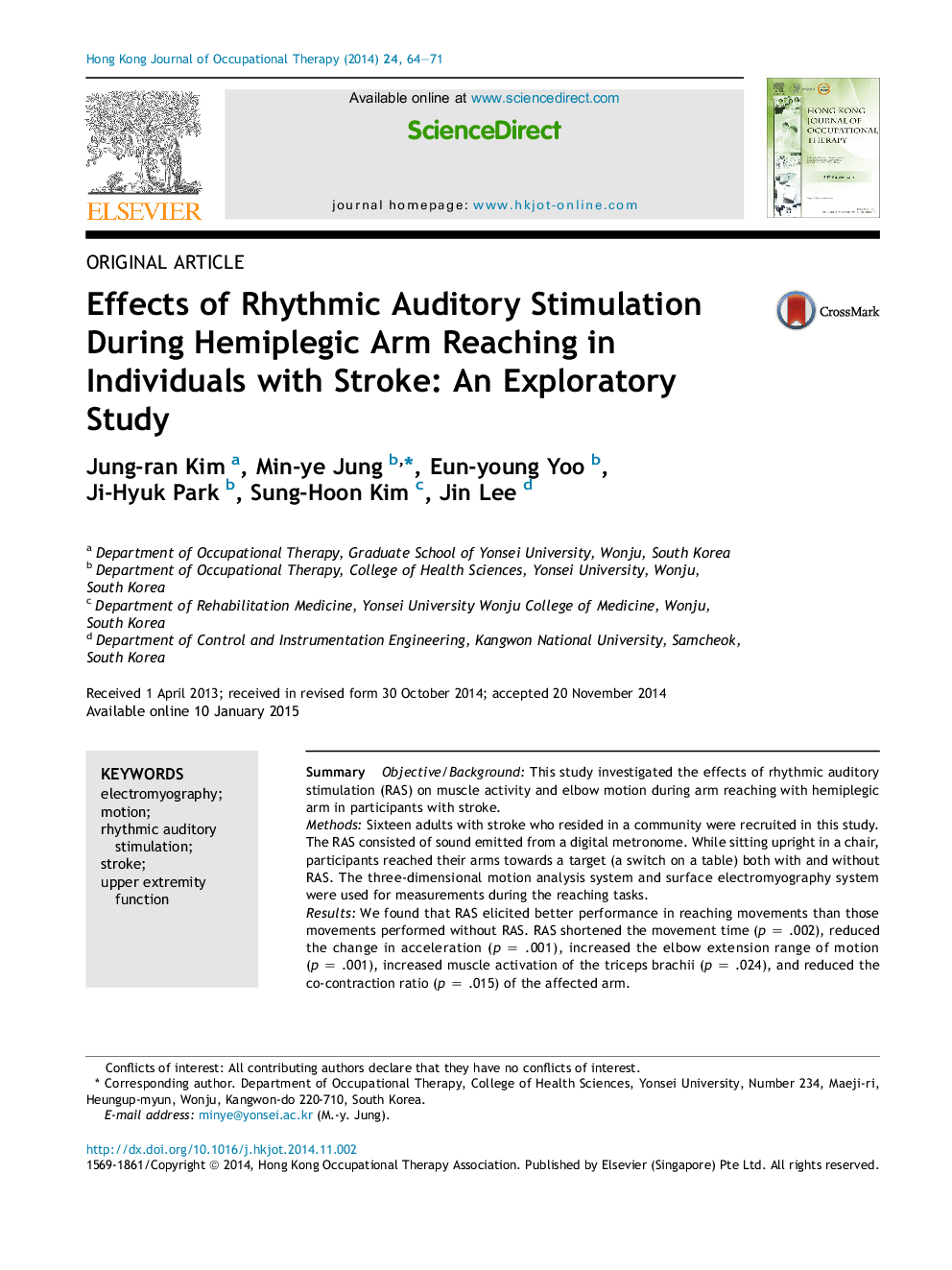| Article ID | Journal | Published Year | Pages | File Type |
|---|---|---|---|---|
| 5872672 | Hong Kong Journal of Occupational Therapy | 2014 | 8 Pages |
SummaryObjective/BackgroundThis study investigated the effects of rhythmic auditory stimulation (RAS) on muscle activity and elbow motion during arm reaching with hemiplegic arm in participants with stroke.MethodsSixteen adults with stroke who resided in a community were recruited in this study. The RAS consisted of sound emitted from a digital metronome. While sitting upright in a chair, participants reached their arms towards a target (a switch on a table) both with and without RAS. The three-dimensional motion analysis system and surface electromyography system were used for measurements during the reaching tasks.ResultsWe found that RAS elicited better performance in reaching movements than those movements performed without RAS. RAS shortened the movement time (p = .002), reduced the change in acceleration (p = .001), increased the elbow extension range of motion (p = .001), increased muscle activation of the triceps brachii (p = .024), and reduced the co-contraction ratio (p = .015) of the affected arm.ConclusionRAS might be a useful technique to facilitate improvements in motor function of the affected arm in patients with stroke.
